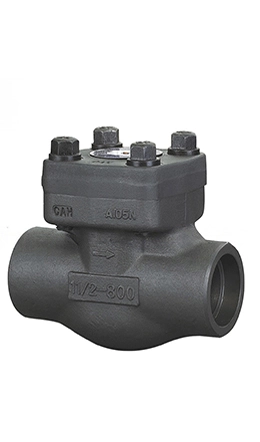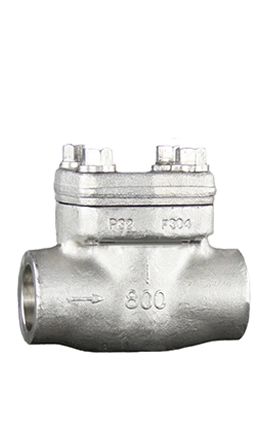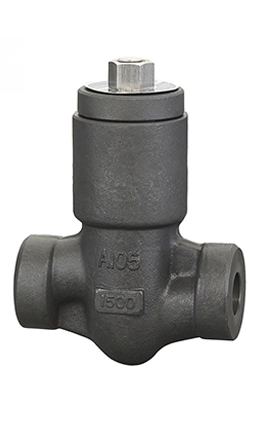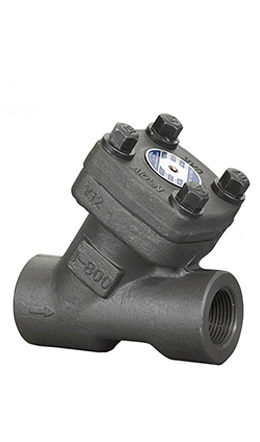The Forged Swing Check Valve is forged body with bolted bonnet. It is suitable for a range of applications and media including steam, air, gas and liquids such as thermal oil and water. Conforming to API 602 and ASME B16.34, this economical and reliable swing check valve offers excellent sealing capabilities in horizontal or vertical postion.




The unique benefits of forged check valves, derived from the forging manufacturing process, make them highly advantageous in demanding industrial applications.
1. Enhanced Strength and Durability:
Grain Structure Alignment: Forging compresses metal, aligning the grain flow to the valve's shape, resulting in superior tensile strength and resistance to impact and fatigue.
High-Pressure/High-Temperature (HPHT) Performance: Ideal for extreme conditions in oil, gas, and power industries due to robust construction.
2. Compact and Lightweight Design:
Achieves high strength with thinner walls, reducing size and weight without compromising performance, beneficial in space-constrained installations.
3. Corrosion and Wear Resistance:
Denser microstructure from forging minimizes porosity, enhancing resistance to corrosion and erosion, especially when paired with alloys like stainless steel or duplex materials.
4. Leak-Tightness and Sealing Efficiency:
Precision forging ensures smoother surfaces and tighter tolerances, improving seal integrity and reducing leakage risks in critical systems.
5. Long Service Life with Low Maintenance:
Exceptional durability reduces wear, extending operational lifespan and lowering maintenance frequency and costs.
6. Reliability in Harsh Environments:
Withstands vibrations, thermal cycling, and shock loads, making them suitable for aerospace, marine, and chemical processing applications.
7. Cost-Effectiveness Over Lifecycle:
Higher initial cost offset by reduced downtime, replacement, and repair expenses, offering long-term savings.
1. Flow Direction
Verify valve orientation: Check valves only allow flow in one direction. Ensure the valve is installed with the flow direction matching the arrow or markings on the valve body. Installing backward will block flow and damage the system.
2. Orientation (Position)
Swing vs. Lift Check Valves:
Swing check valves: Install in horizontal pipelines with the disc hinge pin oriented horizontally. Ensure sufficient space for the disc to swing open fully.
Lift check valves: Typically installed in vertical pipelines (upward flow) but can also work horizontally. Ensure the piston or disc moves freely.
Avoid inverted or angled installations unless explicitly approved by the manufacturer.
3. Proper Alignment and Support
Avoid misalignment: Misaligned piping creates stress on the valve body, leading to leaks or premature failure. Use alignment tools during installation.
Support the piping: Use brackets or hangers to prevent sagging or strain on the valve, especially in vertical installations.
4. Pre-Installation Inspection
Clean the system: Remove debris, welding slag, or pipe scale that could damage the valve seat or disc.
Inspect the valve: Check for shipping damage, corrosion, or foreign material inside the valve body.
Test the valve: Manually verify the disc or piston moves freely before installation.
5. Avoid Welding Heat Damage
Do not weld directly to the valve unless it is explicitly rated for welding. Forged valves are heat-treated; excessive heat can alter their metallurgical properties.
If welding near the valve, use heat sinks or thermal barriers to protect it.
6. Operating Environment Considerations
Temperature and pressure: Ensure the valve’s pressure class (e.g., ASME 900#) and temperature rating match the system’s operating conditions.
Corrosive/abrasive media: Confirm the valve material (e.g., stainless steel, duplex) is compatible with the fluid.
Thermal expansion: Account for pipe expansion/contraction in high-temperature systems to avoid stress on the valve.
